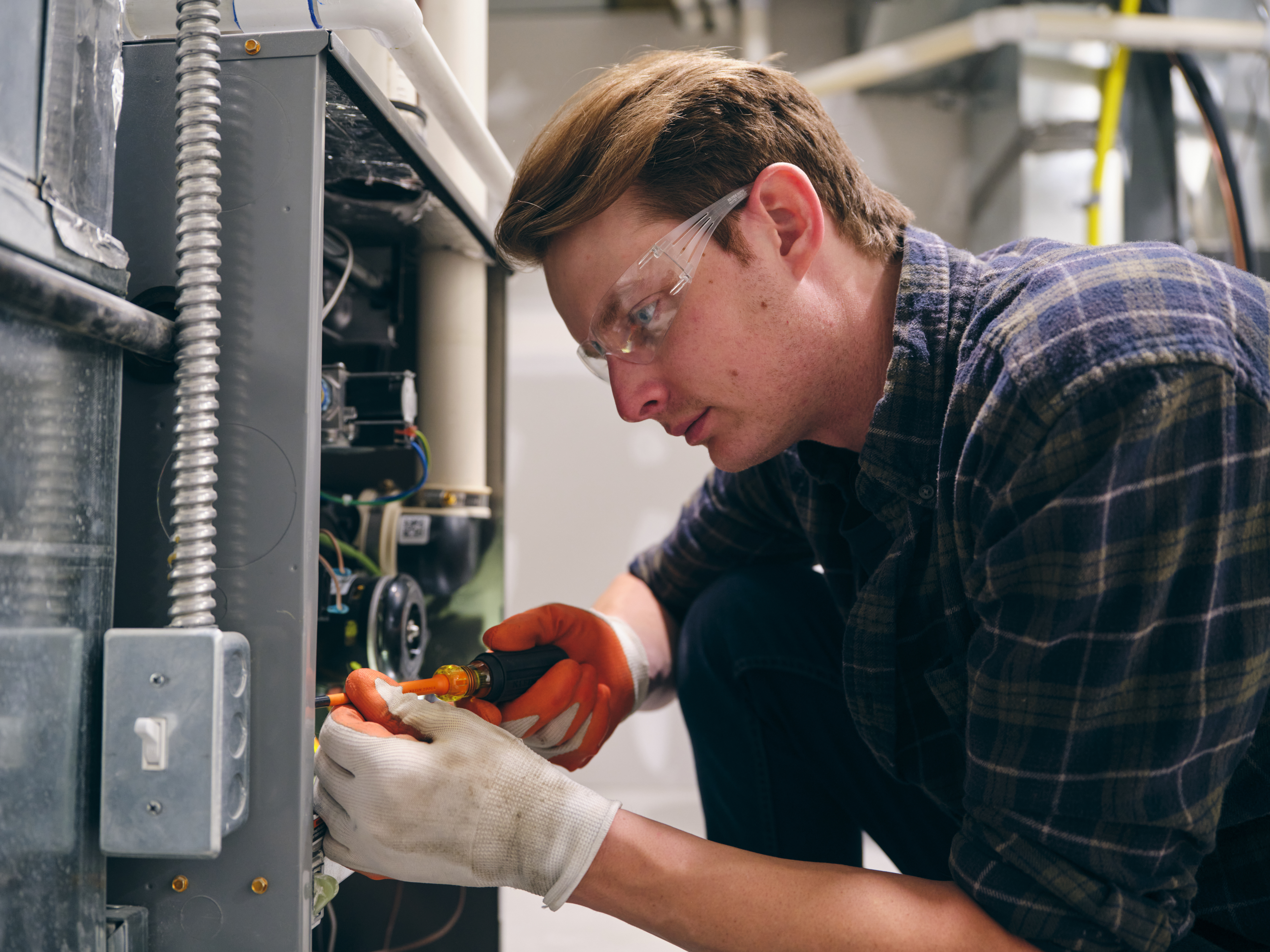Whether you’re building a new home, recently purchased a house, or your existing heating system needs an upgrade, an HVAC professional from Air Authority, A Riteway Service Company can help you choose the best heating system to suit your needs. When recommending a system to a homeowner, we consider year-round climate, initial cost, maintenance, comfort, and energy efficiency. Some homeowners are thrilled when they learn how much money a more efficient heating system can save them on monthly utility costs. By pairing a new high-tech smart thermostat with your new heating system, the savings you realize may defray the installation cost over time.
Use this homeowner’s guide to different home heating solutions to help you ask the right questions at your consultation.
Forced Air Systems
Commonly called furnaces, forced air systems are the most frequently used heating systems in the U.S. Most work by burning fuel, such as oil, natural gas, or propane. Alternatively, some heating units operate on electricity. These systems work by using fuel or electricity to heat air in the heat exchanger, making it hot. Air from your home’s ductwork then travels through the heat exchanger. The heating unit’s blower then forces the heated air into the supply ductwork, distributing it throughout your home.
Propane and natural gas furnaces are the most cost-effective because they tend to be the cheapest to run based on fuel costs, and modern models can reach an energy efficiency of up to 98.5 percent. However, this type of heating system may not be viable if you do not already have a propane tank to run other appliances or are not hooked up to a municipal gas supply. In this case, an oil furnace is the next cheapest to run.
As an alternative to a fuel-powered unit, an electric-forced air system uses electric heating elements to warm the air. However, due to electrical usage, they are more costly to operate.
Heat Pumps
Heat pump systems are growing in popularity with homeowners. Known for their versatility and energy efficiency, they can transfer heat between the indoor and outdoor air and provide heat in winter and cooling in summer. They work just like an air conditioner but have a reversing valve that allows them to provide warm air. Electricity is the usual power source, but natural gas models are available.
Air-sourced heat pumps are the most common type homeowners install. As the name implies, air-source heat pumps use outside air to heat your home. They are better suited to milder climates because they become less efficient at producing heat as temperatures drop. Some homeowners install a duel system and use a furnace for heating during the coldest months to supplement their air-source heat pump.
Another option is a ground-sourced heat pump. The advantage of a geothermal system is that it uses the uniform temperature underground to heat and cool your home, which allows it to provide efficient and consistent heating even during the coldest months of the year. However, they are expensive to install. A geothermal system consists of a heat pump unit that is connected to loops of underground pipes. The ground loops are filled with a water-based solution, which transfers heat energy from the earth to the heat pump unit in winter—and vice versa in summer.
Geothermal heat pumps are highly efficient, and maintenance costs are usually low. The heat pump will last up to 25 years, and the underground components can last 50 years.
Ductless Minisplit Systems
Highly energy-efficient ductless mini systems have increased in popularity in recent years. They work as an add-on to homes without ductwork. You can also install one to heat or cool a single space, like an addition or a remodeled garage, to supplement your current HVAC system. An advantage of these systems is that they do not use ductwork, which can be a source of conditioned air loss in air-forced heating.
Similar to air source heat pumps, mini splits have two main parts—an indoor unit that handles air and an outdoor condenser. They are inexpensive to install because all a technician needs to do is drill a small hole in the side of your house to connect the indoor and outdoor parts.
Mini splits are small and flexible. The indoor air handlers can be hung on a wall, suspended from the ceiling, or mounted flush. When installing a mini-split, it must be correctly sized and placed in the best location by a professional. A Mini-split that is too large for the space you want to heat or that is installed in the wrong location may result in short cycling. The unit won’t provide adequate temperature control and waste energy.
Hydronic Heating Systems
Hydronic heating systems use fuel oil, propane, natural gas, or electricity to heat water inside a central boiler. In many homes, the steam produced travels through pipes to baseboard heaters or radiators to heat each room. Homeowners may choose to heat their houses with a boiler because they don’t dry out the air as much as forced-air systems do. They also tend to be more energy efficient and have longer lifespans than furnaces.
Alternatively, some homeowners install radiant floor heating. In this scenario, hot water is heated by the boiler and travels through pipes looped underneath the flooring. The advantage of these systems is that they directly heat the people and objects in a room. This means it provides more consistent heating than other heating systems and eliminates cold spots. The disadvantage of these systems is that they are expensive to install. In addition, radiant heat flooring may only be viable if you are building a new home or remodeling your house. The cost of tearing up your flooring and replacing it to install this type of system may be prohibitive.
Benefits of a Smart Thermostat
No matter what type of heating system you install, you can boost your home heating system’s efficiency with the latest modern technology. Each of the heating systems above is compatible with a smart thermostat. Also called a WiFi thermostat, this device regulates your home’s temperature using sensors that detect temperature, occupancy, and proximity information. They greatly improve your home’s energy efficiency, and you can manage your heating and cooling systems using Google Assistant, Amazon Alexa, and Apple’s Siri’s Homepod.
Using a Smart thermostat saves homeowners both time and money. It allows you to schedule your system to run less when you’re away from home or sleeping and adjusts the comfort level of your home before you come back or wake up. Using an app on your favorite device allows you to be in control of your HVAC system, no matter where you are. You can even lower the temperature at your house if you forget about it before leaving for vacation or decide on a night out rather than going home.
In addition, a smart thermostat allows you to track your heating and cooling system’s energy usage. For instance, if you lower the temperature in your home in the winter by a few degrees, you can determine if the energy savings are worth the inconvenience of wearing warmer clothing when relaxing at home. Many apps used in conjunction with smart thermostats also provide tips on reducing your energy consumption.
Contact the Professionals
You can count on the professionals at Air Authority, A Riteway Service Company in San Antonio to help you decide on the best heating system for your home and ensure it’s correctly installed. We’re the local experts for installing, repairing, and maintaining heating systems, including heat pumps and mini-split systems. In addition to keeping you warm in winter, we also perform air conditioner repair, replacement, and maintenance. Call us for all your heating and cooling needs.





